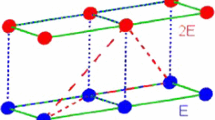Abstract
Models for mixtures of discrete velocity gases have been recently introduced by the authors and have produced unexpected results, particularly with regard to the possible existence of nonphysical collision invariants. Here we discuss a method to construct models without spurious invariants. The method can be extended to very general models, including polyatomic gases, chemical reactions, etc.
Similar content being viewed by others
REFERENCES
A. V. Bobylev and C. Cercignani, Discrete velocity models for mixtures, Jour. Stat. Phys. 91:327-342 (1998).
C. Cercignani and A. V. Bobylev, Discrete velocity models: the case of mixtures, Transp. Th. Stat. Phys. (to appear, 1999).
H. Cornille, private communication (1998).
V. V. Vedenyapin and Yu. N. Orlov, Polynomial invariants for quantum Hamiltoniants and for discrete velocity models of the Boltzmann equation, Preprint (in Russian), Keldysh Institute of Applied Mathematics (December, 1998).
H. Cornille and C. Cercignani, Shock waves for a discrete velocity gas mixture, submitted to J. Stat. Phys.
C. Cercignani, Sur des critères d'existence globale en théorie cinétique discrète, C.R. Acad. Sc. Paris 301, Série I, No. 3, 89 (1985).
F. Rogier and J. Schneider, A direct method for solving the Boltzmann equation, Transp. Th. Stat. Phys. 23:313–338 (1994).
Author information
Authors and Affiliations
Rights and permissions
About this article
Cite this article
Bobylev, A.V., Cercignani, C. Discrete Velocity Models Without Nonphysical Invariants. Journal of Statistical Physics 97, 677–686 (1999). https://doi.org/10.1023/A:1004615309058
Issue Date:
DOI: https://doi.org/10.1023/A:1004615309058




